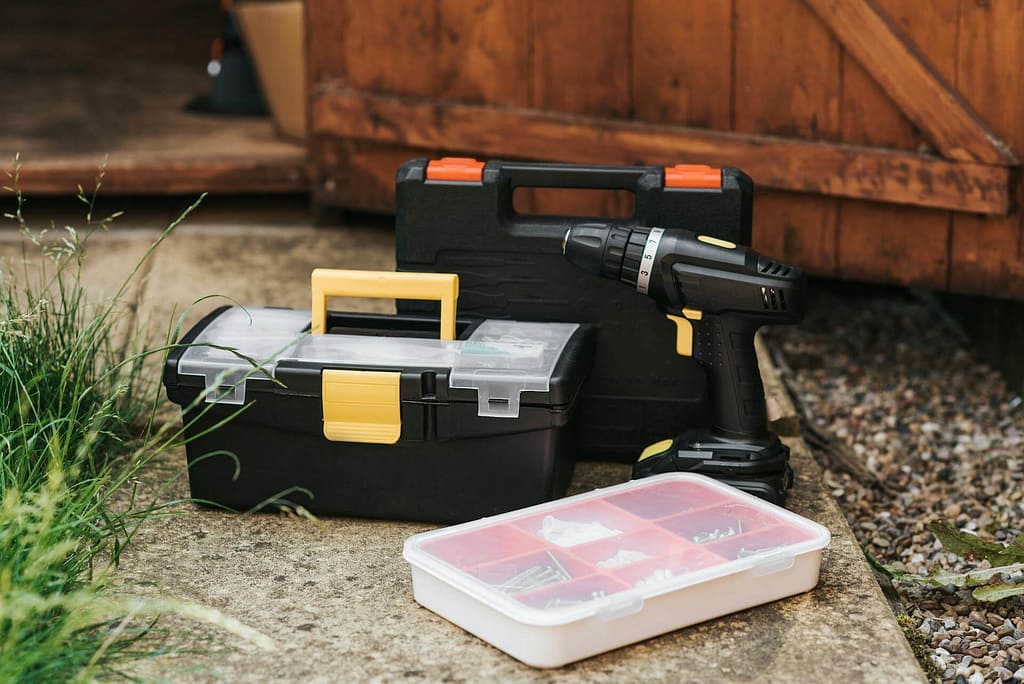Your front door is one of the most important elements of your home’s exterior. It says so much about you and your house before it’s even opened. Unfortunately, even the most durable entry doors can deteriorate over time. That’s why door replacement is a job that most homeowners in Virginia will inevitably face at some point.
If you’ve never done the task before, it can seem like a daunting challenge. However, with the right instructions, replacing a door is much easier than you think. In this guide, we’ll teach you everything you need to know about how to replace doors in Virginia.
When should you change your door?
The average front door has a lifespan of about 20 years; however, the actual number you can expect depends on many factors. If you’re wondering when it’s time to swap your door, these are the signs to look out for:
- Cracks along the edges or the panel design. If left untreated, even minor cracks can turn into big problems.
- Space under or around your door – pay attention whether you see the light around the edges or feel a draft
- Your door is difficult to close or lock
- Your energy bills are growing
- Outside noise is spoiling your peace
Replacing your door may seem like a hassle, but don’t let it stop you. Once you make the upgrade, your home will be more secure, energy efficient, and inviting. However, if you don’t feel confident about your carpentry and installation skills, you should hire a professional because it does involve risks.

Step-by-step: How to replace doors in Virginia
Before jumping into the process, you should know there’s a big difference between installing pre-hung doors and slab doors, especially because one option has a frame while the other doesn’t.
If your plan is to get a new door without replacing your doorframe, make sure to carefully assess the state of your current frame. Your new door should match it perfectly, so don’t make the rookie mistake of not measuring the door opening before purchasing! Write down the measurements for all the critical parts: the top, middle, and bottom of the frame, and don’t forget to measure both sides and the center, as well.
Our tip is to opt for a door that is slightly smaller than the opening so you can adjust accordingly during the installation process.
Prep the opening
Assuming you’ve already removed your old door, the next step is to ensure the opening is ready for the upcoming work. This means removing any debris or old caulk that might disturb the process. You should also check whether the subsill is level. If it’s not, make the necessary adjustments. Once you’ve completed these steps, you should put a drip cap above the opening. Don’t forget to apply a bead of exterior caulk where the door will touch the wall and where its threshold will sit.
Install the door
Next, the exciting part! After prepping the opening, it’s time to install the new door. Place it in the opening (starting with the top) and check whether it is level and plumb. Once it is in the right spot, press it firmly into place and use shims for a tighter fit. Note that the gap between the door and jamb should be consistent.
Make sure the frame is fastened
One of the most important parts of the whole process is fastening the frame. After all, you don’t want to go through the hassle again in just a few years, right? Thankfully, it’s nothing complicated. All you have to do is take off the weatherstripping to get access to the pre-drilled screw holes in the jamb. Next, insert new screws into the framing, but be careful – you don’t want to damage the frame.
Insulate around the door
A pretty door is nothing unless it’s properly insulated. That’s why you shouldn’t forget to fill the space between the doorjamb and the framing. Our advice is to use minimal expanding foam insulation. If there’s any remaining space, you can add strips of fiberglass insulation. Plus, around the outside of the door frame, put some exterior-grade caulk.
After you’ve finished this step, all that’s left to do is install the hardware, and you’re done. Not as painful as you thought, right?
Practical tips to replace doors in Virginia
When replacing doors in Virginia, you can’t exactly do whatever pops into your mind. Remember that every door installation must comply with the state’s latest codes and regulations. Otherwise, you risk getting into legal issues and even costly fines. So, before you start any works, check the Virginia Uniform Statewide Building Code (or contact the Homeowners Association) and specify the rules for door sizes and colors.
The main things to keep in mind:
- The minimum allowed door opening width is 32 inches when opened at 90 degrees
- The width of a swinging door shouldn’t be more than 48 inches
- Manually operated bolts are not allowed, with rare exceptions
Recap: How to replace doors in Virginia
Replacing a worn-out door can seem intimidating, but you don’t have to be a master carpenter to do an excellent job. With our tips and tricks, we’re confident you’ll manage the task successfully. However, if you don’t want to risk any errors (which inevitably may occur in the process), consider hiring our professional contractors for your door replacement.
Get in touch with our local contractors in Virginia and get a customized quote for the services you need.
Fact Checked by Lita Legzdina 11/19/2024